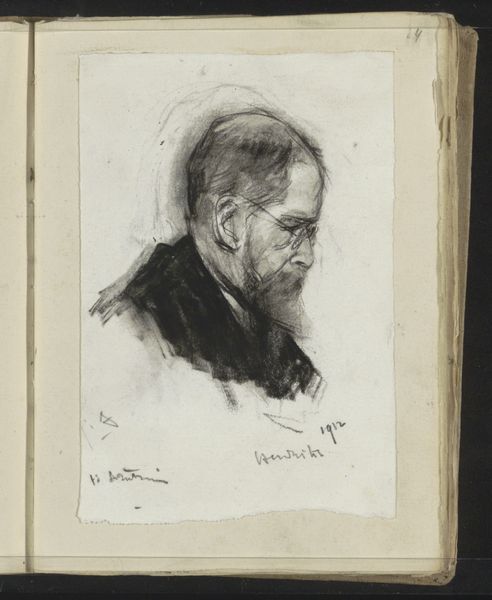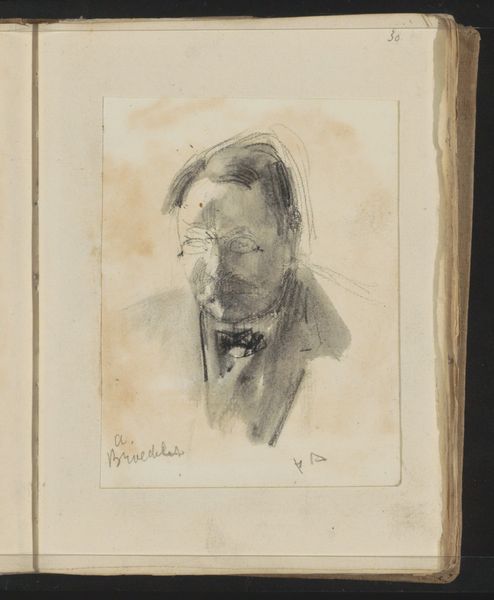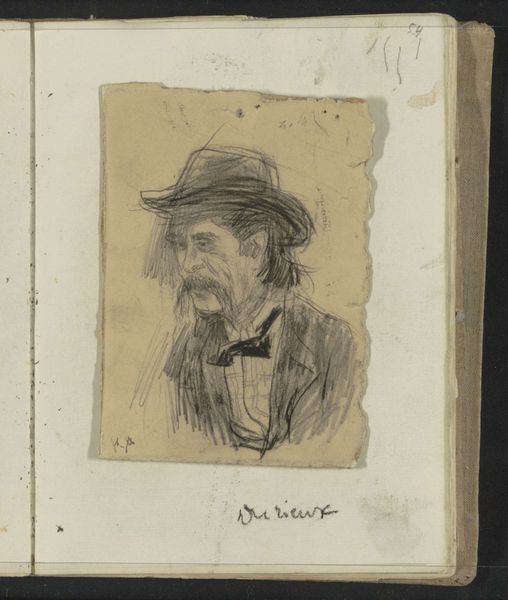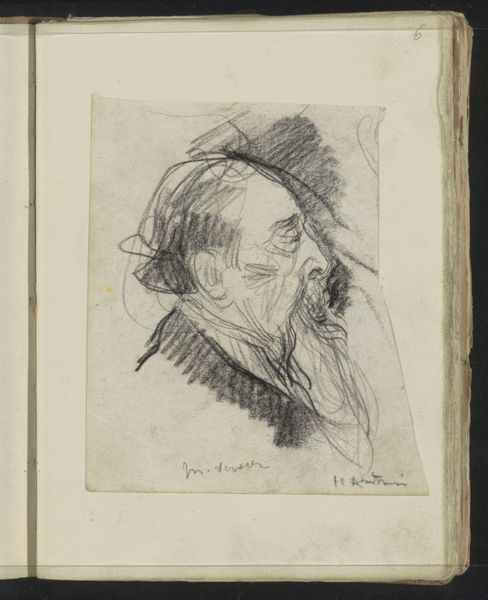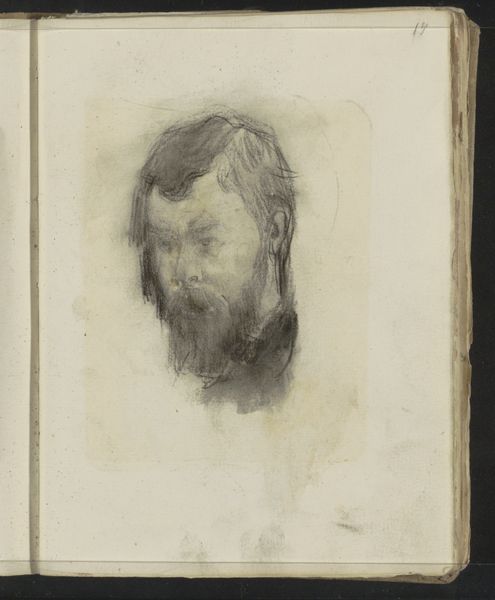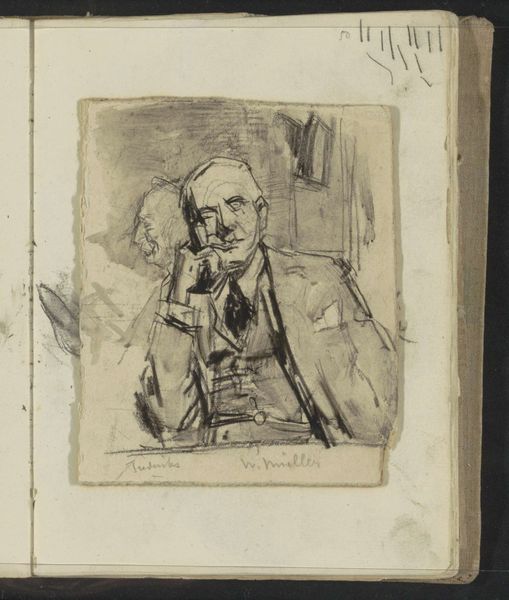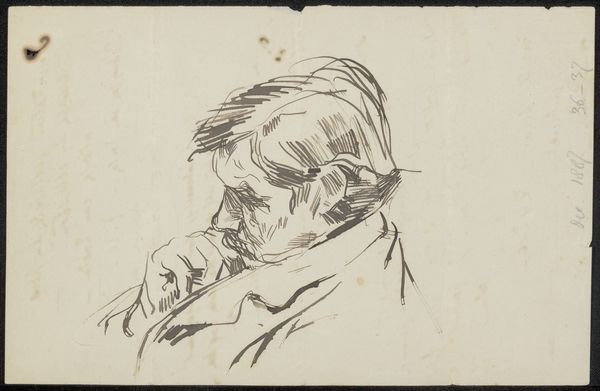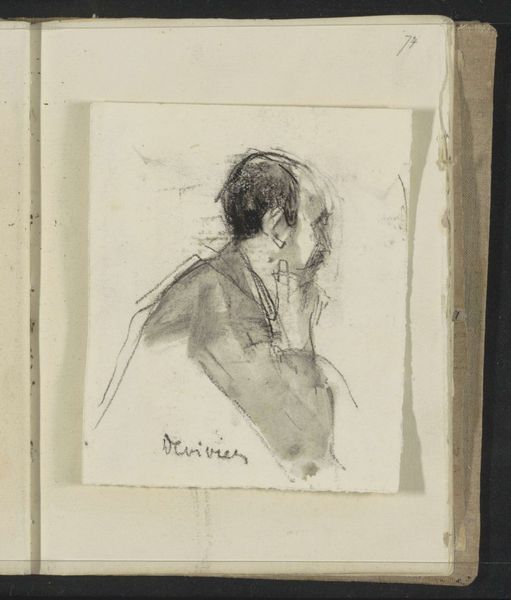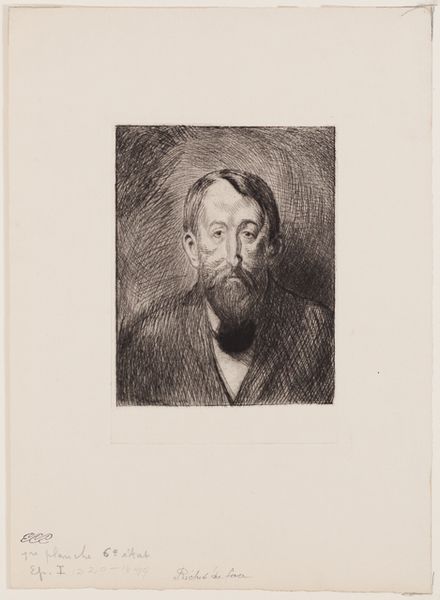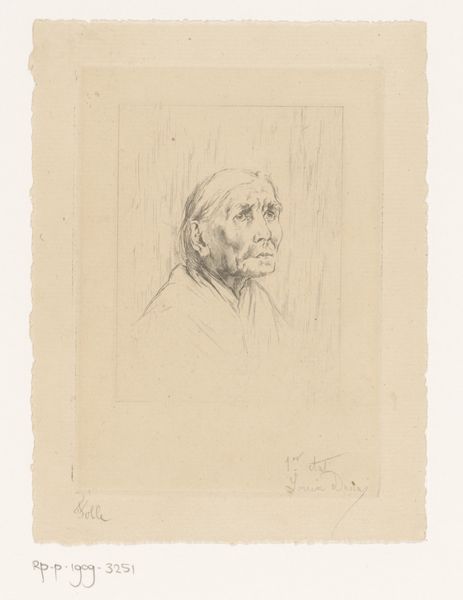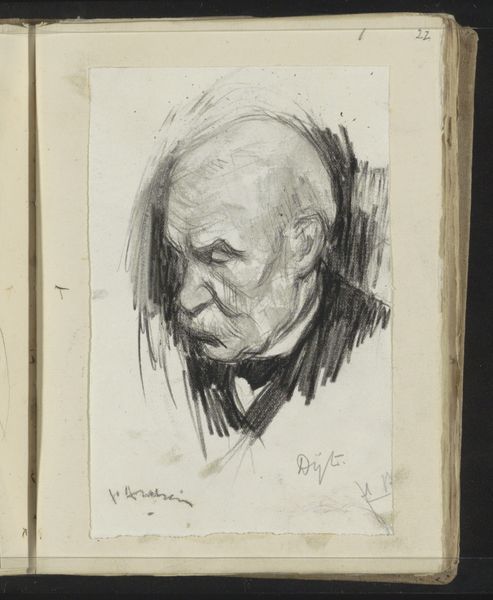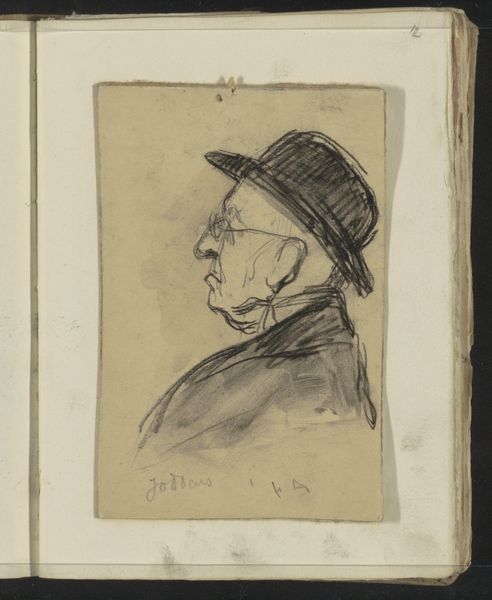
Copyright: Rijks Museum: Open Domain
Editor: This sketch, "Portret van kunstenaar Willem Roelofs jr.," by Floris Arntzenius, made sometime between 1883 and 1914, using pencil and perhaps colored pencil, presents a sensitive portrayal. I’m struck by how immediate and intimate it feels. What do you see in it? Curator: I'm particularly drawn to the overtness of the drawing. We see the raw materials and process laid bare. Pencil on paper isn't just a medium; it's the very evidence of labor and thought made visible. Consider the social context: who had access to materials like these? The image portrays Roelofs as a worker within the confines of artistic practice. How might Roelofs, the son of an accomplished painter, use such materials in opposition to academic work or maybe embrace that legacy? Editor: That's an interesting point. It is tempting to consider the accessibility of pencil and paper as something that democratizes portraiture, moving it away from oil paints and a longer sitting. Curator: Precisely! Think about the means of production at this time. The relative ease and low cost of acquiring pencils and paper allowed for a greater exploration of the medium, and expanded portraiture to less wealthy and trained artists. Editor: I hadn’t considered the socio-economic implications of what seemed like a simple sketch. Seeing the drawing in that context does add another layer to understanding the artwork. Curator: Absolutely. We must analyze these choices to comprehend the artwork as an entity born out of tangible actions and the conditions surrounding those actions. Editor: Thank you. It is amazing how a closer look into materiality can uncover wider production questions about accessibility and artistic circles.
Comments
No comments
Be the first to comment and join the conversation on the ultimate creative platform.
